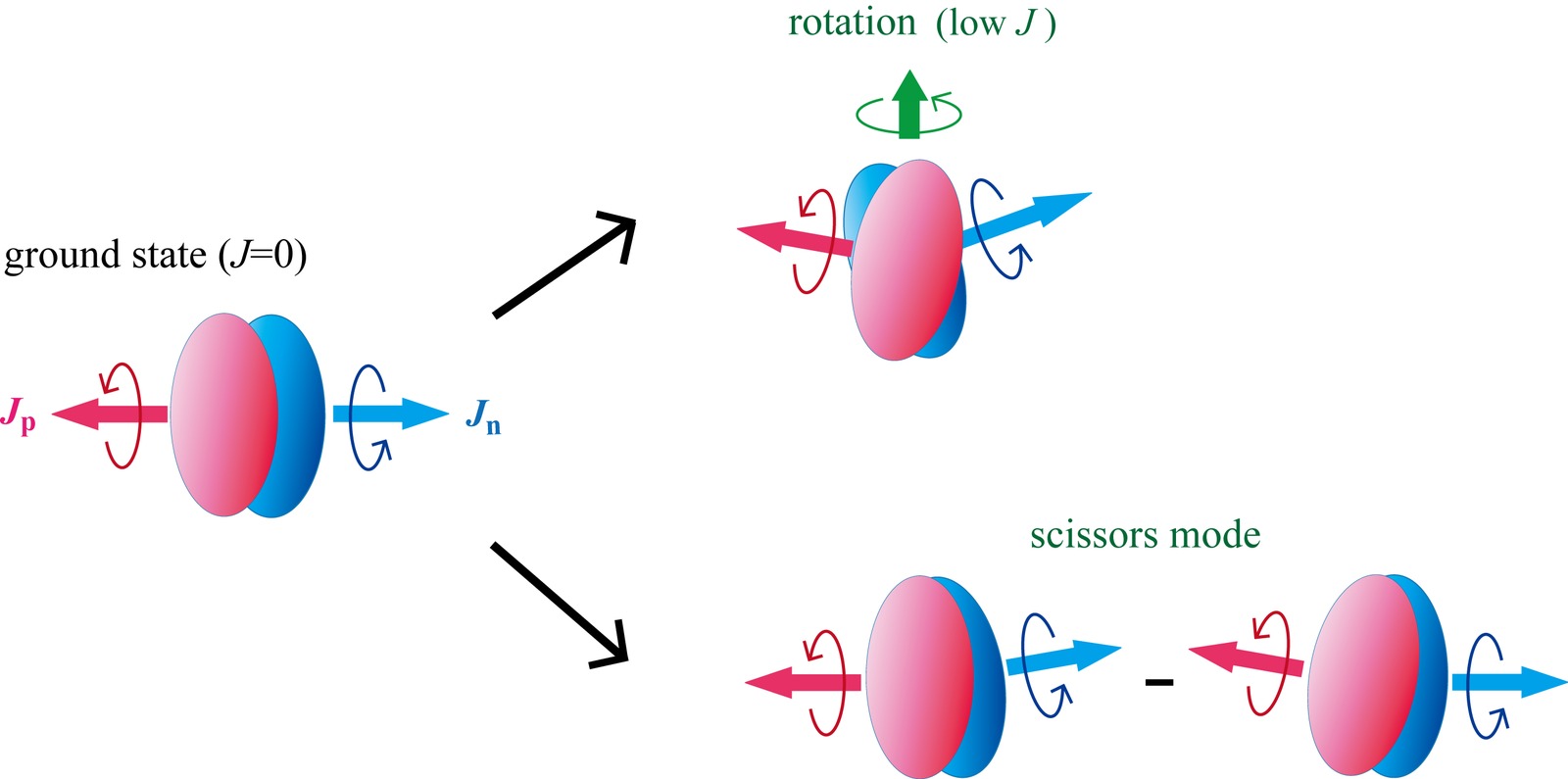*
last modified (y/m/d): 2011/12/9
, To my works
,to N. Tajima's Home Page in
English
or
Japanese
Hidden unexpected proton-neutron correlation in nuclear rotation confirmed
Our recent paper
``Meaning of antiparallel proton and neutron angular momenta at low spins'',
Naoki Tajima and Takaharu Otsuka,
accepted (in December, 2011) for publication in Physical Review C,
presents a crucial support to a controversial picture of
the rotation of atomic nucleus, by turning down a criticism. The
nuclear rotation appears prominently with an almost perfect J(J+1)
energy pattern, with J being the angular momentum. This feature looks
like a simple quantization of a classical rotation of an ellipsoid,
which is at rest for ground state and rotates slowly for low-spin
states. In the conventional view, the ellipsoid made of protons and
that made of neutrons are considered to rotate together even in
quantum mechanical treatment. In 1993, a contradictory picture was
proposed that the proton ellipsoid and the neutron ellipsoid are
rotating fast and oppositely in the ground and low-spin members of the
rotational band. Their motions cancel each other completely, yielding
J=0 for the ground state (see Figure). Apparently this picture
differs so much from conventional image, and there was a criticism
that this picture should be false due to a spurious center-of-mass
motion. The present paper shows that the criticism is not applicable,
and the picture of opposite (i.e. anti-parallel) correlation is
correct. Such correlation can be characteristic of systems of two
components (protons and neutrons in nuclear case). The observed
scissors-mode strength is consistent with this anti-parallel
correlation, providing strong experimental evidence.

To Page Top
